Endings are an important part of your jazz vocabulary because they are one of the most memorable parts for your listeners. The problem is that most jazz standards don’t have a fixed ending (aka coda), so it’s a good idea to have a couple of standard endings up your sleeve. In this lesson, you will learn seventeen ways to end a song. Use them as a starting point to develop your own jazz endings.
The endings below all start with a ii V to the tonic I because that is usually the last part of a jazz standard.
Most examples are in C major (examples 1 to 14) and C minor (examples 15 to 17), some are in G major.
An Overview of What You Will You Learn
- End Chord – Major 6
- End Chord – Major 7
- End Chord – Maj7(add6)
- End Chord – Major 6/9
- End Chord – Major 6/9(#11)
- End Chord – Maj7#9#11
- The Tag Ending
- The Flat-Five Ending
- The bVI bII Ending
- The bVII bII Ending
- Maj7 Chords Throught the Circle of Fifths
- The Count Basie Ending
- The Take The “A” Train Ending
- The Joe Pass Ending
- End Chord – Minor 6
- End Chord – Min/Maj9
- End Chord – Maj7#11 For Minor-Key Standards
1 – The Major 6 Chord
Major 6 chords work great to end a song because they are more stable than major 7 chords.
That being said, major 6 chords can sound a bit plain to the modern ear. That’s why they are more prevalent in traditional jazz genres.


Here are two other C6 chord voicings (check out our Guitar Chord Dictionary for more C6 voicings):
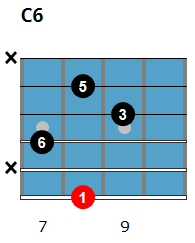
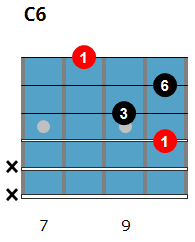
2 – The maj7 Chord (Root on Top)
Major 7 chords generally don’t work very well as end-voicings.
The following C major voicing does however because the minor second interval between the 7 and 1 on top of the voicing creates a nice dissonance.
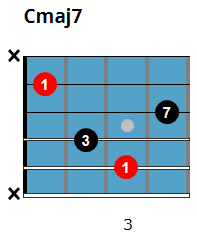

3 – The Maj7(add6) Chord
Major 7 voicings with an added 6 are not used a lot for comping but work great as ending chords.
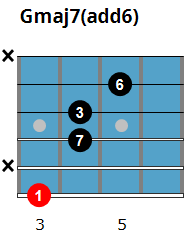

Here are two more Cmaj7(add6) voicings:
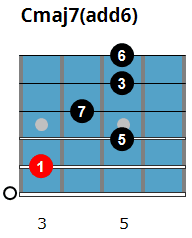
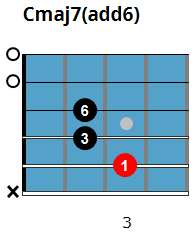
4 – The 6/9 Chord
By adding the 9 to a major 6 chord, you get a major 6/9 chord. These kinds of chords are used often as an ending chord and are easy to finger on the guitar.
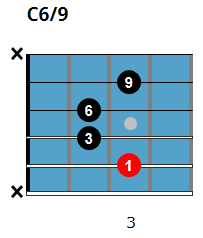

Here are two more 6/9 voicings:
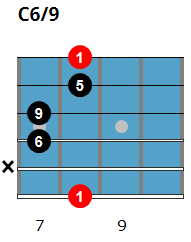
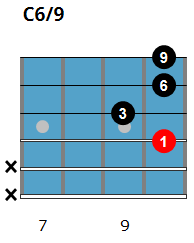
5 – The 6/9(#11) Chord
#11 chords are the bread and butter of jazz endings, usually combined with a 6 and/or a 9.
In the following example, the V chord (G7) in the second bar is replaced with a Db9(#11). This is called tritone substitution.
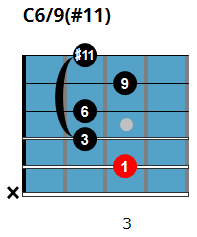

Here is a similar example but in the key of G major.
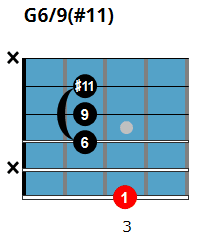

In the next example, I add chord inversions of G6/9 to extend the line.

6 – The maj7#9#11 Chord
A major 7 with a #9 is not a very common chord, but it has a nice tension to it and is an interesting chord to end on.
This voicing is not a m/maj7 chord, the b3 acts as a tension (#9).


7 – The Tag Ending
A tag is a series of chords that are repeated, usually at the end of a song.
There are several options of chords you can use in your tag ending.
In the following example, that starts with a regular ii V, I added a secondary ii V (Em7 A7) that goes back to the ii (Dm7) of the tonic key.
The resulting chord progression is usually repeated and improvised over.

8- The Flat-Five Ending
The flat-five ending, named after the first chord (F#m7b5) of the progression, is another classic way to end a tune.
The progression starts with a bVm7b5 and descends chromatically to the I.
The key to this progression is to keep the root of the key (C) on top of the chord voicings.

9 – The Flat VI – Flat II Chord Progression
This is a nice one, instead of going to the I to end the song, first go to the bVImaj7, then to the bIImaj7, and then conclude with the I.
Note that the roots of the added major chords are the tritone substitutes of the ii V: Ab is the tritone sub of D, Db the tritone sub of G.
This end progression is usually played ad lib (without a fixed tempo) with improvised lines over it. Here, I play a mixture of arpeggios and scales.
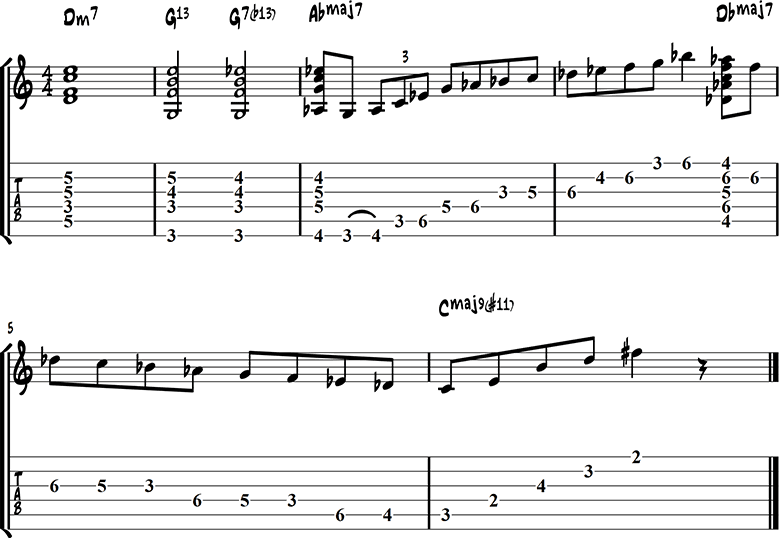
The bIImaj7 chord can also be used as an ending chord, without resolving to the tonic chord (I).
10 – The Flat VII – Flat II Chord Progression
This is a variation of the previous chord progression, where the bVI is replaced by a bVII.

11 – Major 7 Chords Through The Circle of Fifths
The following ending features a progression of major 7 chords going through the circle of fifths, starting on the Imaj7 (Cmaj7), and ending on the bIImaj7 (Dbmaj7).
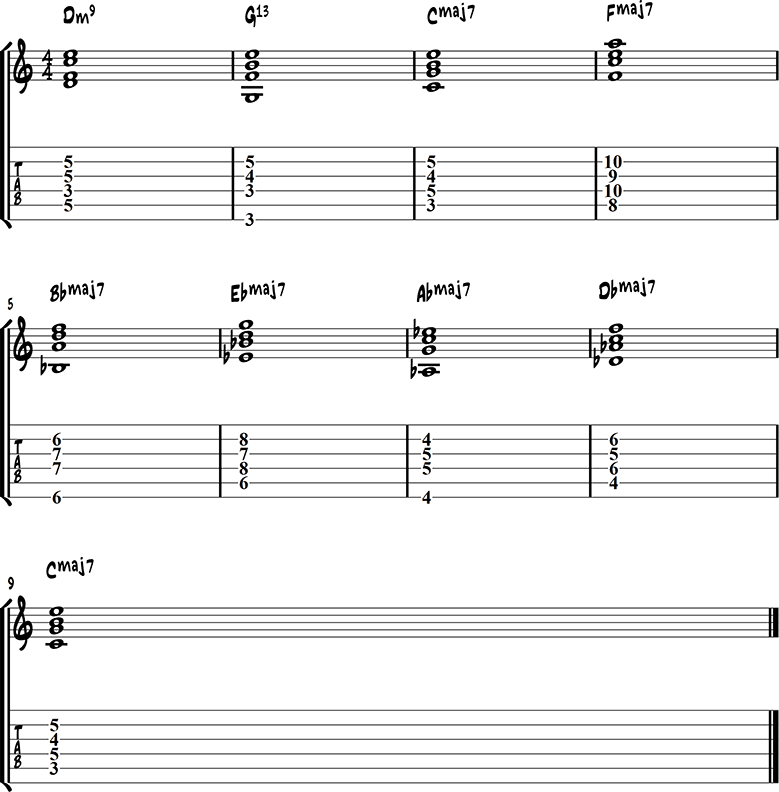
12 – The Count Basie Ending
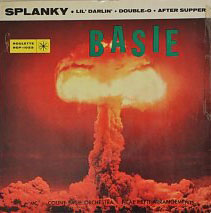
The Count Basie ending is one of the most iconic endings in jazz and can be heard in Basie songs such as Broadway and Splanky.
This ending is derived from a classical ending composed by Italian guitarist and composer Matteo Carcassi (1792-1853).
This is how Basie plays this classic ending:

There are several other versions of this ending, such as this one for example:

13 – The Take The “A” Train Ending
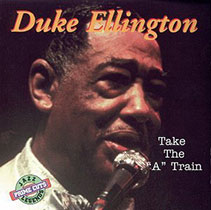
Another cliché ending is the Take The “A” Train ending, also known as the Duke Ellington ending, named after the composer of Take The “A” Train.

14 – The Joe Pass Ending
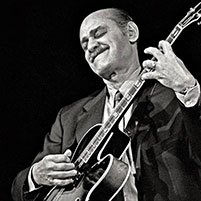
Here is an ending that has been used by Joe Pass regularly, usually to end a blues.

15 – The Minor 6 Chord (For Minor Key Standards)
A minor 6 chord is an obvious choice to end a song in a minor key.
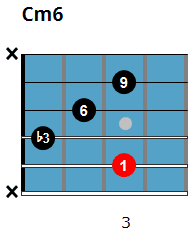

Here is a similar example, this time in G minor.
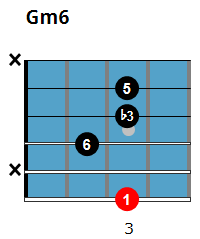

A minor 6 ending chord with a natural 7 also works great and has a bit more bite to it.
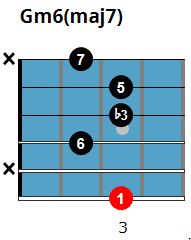

16 – The Minor/Major 9 Chord (For Minor Key Standards)
Another good option to end minor-key standards is the minor/major 9 chord.
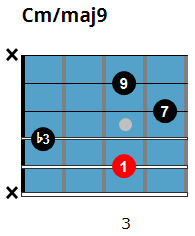

Here is a similar example, but in the key of G minor.
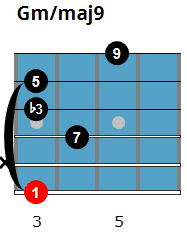

17 – The Maj7(#11) Chord (For Minor Key Standards)
Lastly, you can use a major chord to end a minor-key song.
Playing a major chord where the listener expects a minor chord is a nice effect and really opens up the sound, especially on ballads.


Do you have a source or link for where you got this piece of information?
“The Count Basie ending is one of the most iconic endings in jazz and can be heard in Basie songs such as Broadway and Splanky.This ending is derived from a classical ending composed by Italian guitarist and composer Matteo Carcassi (1792-1853).”
Source? Thank you.
Me again… I am “on a roll”.
Referring again to example 15, the first chord is actually a Cm69 in the diagram and TAB.
I recognize that Jazz chords are often not fully specified in their name with all their extensions. However, as a scientist by trade I prefer the fuller description!
Jerry Jazz – the Nit Picket
Greetings from London, Canada!
Thanks again for this great library of “GoTo” Endings in Major and minor keys.
There is a small typo on Ending #15 – The last music notation. The minor-Maj7 staff chord name is incorrect (showing as #11).
Great suggestions here! One ending i like to use a lot is the same one Wes uses at the end of West Coast blues. It’s Bflat on the low note and C on the high with open strings. I’m not sure what it’s called.
Hi, Wes uses the same chord as number 5 in this lesson (but indeed with a Bb root instead of C). Cheers!
Great overview! thx!
I would add the nina Simone ending-my baby just cares
and a variation of the flat5/sharp4 ending via Imaj7/III – bIII dim…
Best from Berlin
Sebastian
Excelente lección.
lezione semplice ed eccezionale, perfetto grazie.
This site is simply Wonderful. Thank you very much for all these jazz standards video tutorials and the complementary docs and info.
Brilliant Article, so well-made!
Thanks Nathan!
Very nice concise summary. Thank You !
Jerry “Jazz” (London, Canada)